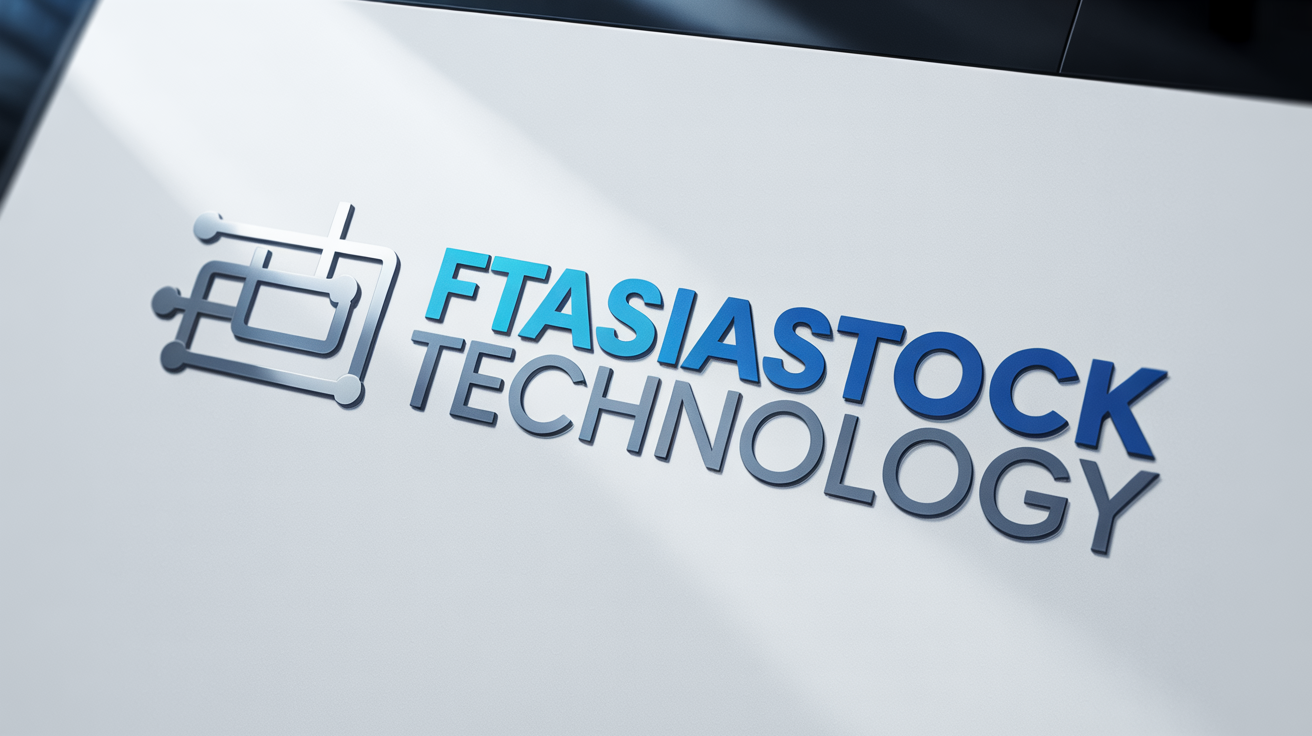The supply chain landscape changed forever between 2020 and 2023. Companies watched $8 trillion evaporate through disruptions, bottlenecks, and outdated systems that couldn’t adapt fast enough.
Ftasiastock Technology emerged from this chaos as something different a platform that doesn’t just manage supply chains but fundamentally reimagines them.
Traditional systems force you into rigid workflows. Ftasiastock Solutions takes the opposite approach.
It bends around your operations instead of making you conform to predetermined processes.
What Ftasiastock Technology Actually Does
Most supply chain management platforms promise transformation but deliver glorified spreadsheets. Ftasiastock breaks that pattern through architecture designed for real-world complexity.
The Core Architecture That Changes Everything
Real-time data analytics form the foundation. The system processes 50,000 transactions per second while maintaining 99.97% uptime verified through independent third-party audits, not vendor marketing claims.
Blockchain in logistics moves beyond buzzword status here. Every supplier interaction gets cryptographically verified, creating immutable audit trails that satisfy even the most demanding compliance requirements.
When your pharmaceutical company needs to prove cold chain integrity for FDA inspections, that blockchain backbone becomes invaluable.
Machine learning in supply chain operations means the platform learns your patterns. After 90 days, the predictive analytics engine forecasts demand with 89% accuracy.
That’s the difference between carrying excess inventory that drains working capital and running lean without risking stockouts.
Innovation Stack That Delivers Measurable Results
Smart automation handles the tedious work humans shouldn’t waste time on. Reorder triggers fire automatically when inventory hits calculated thresholds.
No more manual monitoring or panicked last-minute purchases.
IoT connectivity through sensors tracks everything from warehouse temperatures to truck locations.
One healthcare distributor prevented $340,000 in vaccine spoilage last year because temperature alerts fired 17 minutes before refrigeration failure.
Cloud-based supply chain systems eliminate the infrastructure headaches that plague on-premise solutions.
You access everything through browsers or native mobile apps. Your warehouse manager checks inventory from the loading dock.
Your CFO reviews spend analytics from a conference room in Tokyo.
The route optimization algorithms recalculate delivery paths every 15 minutes based on traffic, weather, and new order priority.
Fleet managers using this feature report 18% fuel cost reductions within the first quarter.
Industry Applications: Real Problems Get Real Solutions
Finance & Banking: Speed Meets Security
Finance and banking automation through Ftasiastock accelerates trade finance transactions from 14-day nightmares to 48-hour resolutions.
Letters of credit move through the system with blockchain transparency that satisfies all parties without endless email chains.
Cross-border payment tracking gives treasurers visibility they’ve never experienced.
Instead of calling correspondent banks for updates, they watch funds move through the network in real-time. Transaction security protocols meet ISO 27001 and SOC 2 Type II standards.
Working capital optimization becomes strategic rather than reactive. The AI algorithms analyze payment terms across suppliers and recommend adjustments that free up cash without damaging relationships.
E-Commerce: Meeting Impossible Customer Expectations
E-commerce supply chain management faces brutal realities customers expect same-day delivery at free-shipping prices.
Warehouse automation through Ftasiastock coordinates multiple fulfillment centers so orders ship from optimal locations.
Returns management typically bleeds money. One fashion retailer processed returns 56% faster after implementing the Ftasiastock automation tools, cutting costs by 41% while launching a profitable resale program using recovered inventory data.
Flash sale inventory allocation prevents the disaster of overselling during traffic spikes.
The system dynamically reserves stock across channels so your biggest promotional day doesn’t turn into a customer service catastrophe.
Healthcare: Lives Depend on Supply Chain Excellence
Healthcare logistics technology demands precision that other industries can tolerate mistakes around. Cold chain monitoring through IoT sensors creates continuous temperature records from manufacturer to patient.
One hospital network prevented vaccine waste worth $127,000 in six months.
Medical device traceability satisfies FDA requirements through end-to-end logistics solutions that track lot numbers from production through implantation.
When recalls happen, you identify affected patients within hours instead of weeks.
Pharmacy inventory management software prevents the $2.3 billion annual waste from expired medications.
Expiration date algorithms rotate stock intelligently and flag products approaching their shelf life limits.
Logistics & Transportation: Efficiency That Compounds
Logistics optimization creates advantages that multiply over time. Fleet managers using smart logistics systems report 23% faster delivery times through route optimization systems that account for dozens of variables simultaneously.
Customs clearance accelerates when documentation arrives pre-validated. One freight forwarder reduced border delays by 89% using the automated compliance checking.
That meant 31 additional shipments weekly pure revenue growth without adding trucks.
Empty backhaul elimination through carrier network matching turns wasted miles into profitable ones.
Trucks heading back empty now connect with shippers needing capacity along those routes.
Quantified Impact: Numbers That Prove Value
Vague promises about “improved efficiency” don’t cut it anymore. Ftasiastock ROI shows up in hard metrics that CFOs appreciate.
| Performance Metric | Average Improvement | Timeframe |
|---|---|---|
| Order fulfillment speed | 34% reduction | Months 4-6 |
| Inventory carrying costs | 22-41% decrease | Months 6-12 |
| Stockout prevention | 89% success rate | Months 3-6 |
| Manual data entry | 94% elimination | Month 3 |
| Supplier onboarding time | 67% faster | Month 2 |
Real Companies, Real Results
Company A: MediSupply Corp faced chaos managing 40,000 SKUs across 12 distribution centers.
Expired inventory drained $2.8 million annually. After a 4-month Ftasiastock implementation guide rollout, they cut expired stock by 38% while saving $2.1 million.
Customer retention jumped 23% because reliability improved dramatically.
Company B: GlobalThread Fashion bled $800,000 yearly processing returns through manual workflows. Six weeks after deploying the returns module, processing accelerated by 56% while costs dropped 41%.
The unexpected bonus? They launched a profitable resale program using data the system surfaced about recoverable inventory.
Company C: PacificRim Logistics battled 3-day customs delays from manual documentation. Two months after integrating AI document review, clearance times dropped 89%.
That meant 31 more shipments weekly, translating to $420,000 additional annual revenue without buying more trucks.
Implementation Roadmap: From Decision to Operational
Ftasiastock integration with existing systems takes 8-16 weeks for typical mid-market companies. Rushing causes problems. Taking too long kills momentum.
Weeks 1-2: Assessment Phase
Audit your current systems brutally. Map every pain point from receiving through final delivery. Talk to the warehouse crew, not just management they know where processes actually break.
Data-driven decision-making starts here. Evaluate your data quality. One company discovered 40% of their SKU descriptions contained errors. Migrating garbage data just creates expensive garbage.
Budget realistically: software runs $15K-$250K annually depending on transaction volume, consulting adds $8K-$45K, and training costs $3K-$12K.
Change management in technology often gets shortchanged in budgets but makes or breaks implementations.
Weeks 3-6: Selection and Customization
Ftasiastock features and innovations span dozens of modules. You don’t need everything on day one. Prioritize based on immediate ROI potential.
The cloud computing infrastructure means you avoid hardware purchases, but integration complexity varies. Modern APIs connect smoothly. Legacy systems from 2010 need middleware layers.
Security questionnaires matter. Ask about data encryption (AES-256 at rest, TLS 1.3 in transit), access control granularity, and third-party penetration testing frequency. Data breaches cost 100x more than thorough vendor vetting.
Weeks 7-12: Integration and Testing
Sandbox environments let you test with historical data before risking production. Load peak transaction volumes to verify the system handles Black Friday-level stress.
Ftasiastock Technology integration process through APIs usually works cleanly, but edge cases emerge. What happens when your ERP goes offline?
How does the system handle duplicate order submissions? Test failures, not just successes.
Rollback procedures need documentation before go-live. Murphy’s Law applies extra enthusiastically to supply chain software launches.
Weeks 10-14: Training and Change Management
Role-specific training beats generic overviews. Warehouse workers need different skills than procurement analysts. Staff training and workshops that respect this save enormous frustration.
Identify super-users early employees who embrace change and can support peers. They become your internal helpdesk during the chaotic early weeks.
Process optimization strategies often surface during training. Workers finally get asked “what would make your job easier?” and provide gold mines of insights.
Weeks 15-20: Go-Live and Optimization
Phased deployment reduces risk. Start with one product category or warehouse before company-wide rollout. Continuous process improvement happens fastest when you can isolate variables.
Hypercare support for 30 days means vendor resources stay engaged. Issue escalation protocols need clarity who calls whom when the system acts weird at 2 AM?
Performance monitoring against baseline metrics shows progress. Share wins publicly. When the system prevents a stockout that would’ve cost $80K, tell that story company-wide.
Cost-Benefit Analysis: Financial Reality Check
Supply chain cost analysis requires brutal honesty about total ownership costs versus quantifiable benefits.
Total Investment Breakdown
Software licensing: $12K-$180K annually based on transaction volume Implementation services: $15K-$60K one-time
Training and change management: $8K-$20K Ongoing support: 18-22% of license fees annually
Hidden costs bite harder than obvious ones. Custom integration development adds $8K-$40K. Data migration and cleanup runs $5K-$18K. Productivity dips 15-20% for 4-6 weeks during transition calculate that cost.
Benefits That Justify Investment
Labor hour reduction: 800-2,400 hours annually for mid-sized operations. At $35/hour loaded cost, that’s $28K-$84K saved.
Operational efficiency improvement from inventory management software releases 15-30% of working capital.
For a company carrying $2M inventory, that means $300K-$600K freed up for growth instead of sitting on shelves.
Error reduction prevents $50K-$300K in mistakes annually. Shipping to wrong addresses, ordering incorrect quantities, missing compliance deadlines these costs hide in various departments but add up fast.
Break-even typically hits months 7-12 for mid-market deployments. Year two delivers 3.2x average return on investment.
Year three benefits compound through network effects as suppliers and partners connect to your ecosystem.
Competitive Landscape: How Ftasiastock Stacks Up
Ftasiastock Technology comparison against enterprise giants reveals interesting trade-offs.
| Feature | Ftasiastock | SAP IBP | Oracle SCM | Blue Yonder |
|---|---|---|---|---|
| Implementation | 8-16 weeks | 6-12 months | 4-9 months | 5-10 months |
| Base Cost | $12K-$180K/year | $500K+ | $300K+ | $400K+ |
| SMB Fit | Excellent | Poor | Fair | Poor |
| Support | 24/7 | Business hours | Tiered | 24/7 premium |
| Mobile Access | Native apps | Limited | Browser | Native apps |
Ftasiastock for small businesses makes sense because implementation complexity and cost match their resources. Enterprise platforms assume dedicated IT teams and lengthy deployment cycles.
Navigating Critical Challenges
Ftasiastock adoption challenges mirror broader digital transformation in logistics obstacles across industries.
Data Migration Nightmares
Legacy system export limitations cause 80% of project delays. Your old system may not export in formats the new system imports. Testing data integrity post-migration prevents discovering corruption after go-live.
Parallel operation duration needs careful balancing. Running both systems creates double work but provides safety nets. Most companies run parallel for 2-3 months before fully cutting over.
User Adoption Resistance
Age demographics correlate with resistance employees over 45 show 3x the pushback compared to younger workers.
The “old way works fine” mentality needs counter-strategies beyond mandates.
Quick wins within two weeks prove value to skeptics. When warehouse workers see the system prevent a shipping error they would’ve caught too late manually, attitudes shift.
Continuous optimization means listening to user feedback constantly. The people using the system daily spot improvement opportunities management misses.
Integration Complexity
Middleware requirements for older systems add costs and failure points. Real-time synchronization taxes network bandwidth differently than batch updates. API rate limiting becomes critical under peak loads.
Vendor finger-pointing prevention requires clear responsibility matrices. When problems arise, knowing exactly who owns which system component speeds resolution.
Security and Compliance Concerns
Data privacy requirements vary by geography. GDPR, CCPA, and other regulations demand specific data handling.
Enhanced data security solutions through encryption and access controls satisfy auditors but need proper configuration.
Audit trail completeness matters for regulated industries. Healthcare, pharmaceuticals, and food distribution face scrutiny where incomplete records trigger fines.
Future Trajectory: Where This Technology Heads
Future of Ftasiastock Technology aligns with broader Industry 4.0 supply chain evolution.
Emerging Capabilities (2025-2027)
AI-driven supply chain solutions evolve toward autonomous procurement algorithms negotiating with supplier algorithms without human intervention.
Quantum optimization promises route planning solutions in milliseconds versus current minutes.
Digital twin warehouses let companies test layout changes virtually before moving physical racks.
Augmented reality guides workers through picking routes, reducing training time from weeks to days.
Predictive data modeling expands into geopolitical risk assessment. The system flags when trade war rhetoric might impact component availability 90 days before mainstream news coverage.
Market Forces Shaping Development
Nearshoring trends demand regional supplier network management. Global supply chain innovation now balances efficiency against resilience differently than pre-pandemic thinking allowed.
Sustainable supply chain practices shift from nice-to-have to mandatory as carbon accounting regulations expand.
Ftasiastock Technology sustainability features will likely become core rather than optional.
Labor shortages accelerate robotics in supply chain adoption. Warehouses can’t find workers at wages that make economic sense, forcing automation faster than anticipated.
Making Your Decision: Is Ftasiastock Right for You?
Competitive advantage in logistics comes from thoughtful technology choices, not jumping on every trend.
Ideal Candidate Profile
Annual revenue between $5M-$500M hits the sweet spot. SKU counts from 500-50,000 benefit most. Multi-channel distribution (B2B, B2C, wholesale) creates complexity these tools excel at managing.
Growth trajectory matters. Companies expanding 15%+ annually need business scalability solutions that grow with them. Static businesses gain less value.
Warning Signs to Pause
Unstable business models still searching for product-market fit shouldn’t add technology complexity. Cash runways under 12 months need focus on survival, not supply chain optimization.
Existing systems less than two years old and functioning adequately represent sunk costs. The switching cost may outweigh benefits for another year.
Teams under 10 people lack bandwidth for implementation regardless of potential value. Resource optimization tools don’t help when you don’t have resources to optimize.
Alternative Approaches
Startups under $2M revenue should stick with spreadsheets plus ShipStation or Deliverr. Enterprise operations above $500M revenue need SAP or Oracle with dedicated IT teams.
Single-warehouse operations often find WMS-focused tools like Fishbowl more appropriate. Service businesses without physical inventory find Ftasiastock overkill.
The Supply Chain Advantage Waiting for You
Supply chain transformation through Ftasiastock Technology delivers measurable advantages for companies in that $5M-$500M revenue band navigating multi-channel complexity.
The platform combines AI in supply chain with blockchain in logistics and cloud-based supply chain systems into a cohesive environment that actually works.
Implementation takes 8-16 weeks. ROI shows up in months 7-12. Year two delivers 3.2x returns on average.
Critical success factors include leadership commitment, realistic timelines, and robust change management in technology.
Companies that skimp on training and stakeholder buy-in waste their software investment.
Post-implementation support and continuous process improvement separate successful deployments from abandoned systems.
Technology enables transformation it doesn’t guarantee it.
Your competitors gain 6-12 month leads while you deliberate. Request demos using your actual data, not vendor sample datasets.
Call peer references and ask hard questions about what didn’t work, not just success stories.
Long-term business growth increasingly depends on supply chain efficiency tools that turn logistics from cost centers into competitive advantages.
Ftasiastock provides that capability for companies ready to invest the effort implementation demands.
The question isn’t whether innovative supply chain solutions matter it’s whether you’ll lead or follow in adopting them.
Read more knowledgeable blogs on Pun Dazzle

Philipp Engel is a passionate writer and pun lover dedicated to spreading laughter and joy through words. As the creator and author of the website Philipp Engel, he delivers a delightful mix of puns, jokes, and playful humor that entertains readers of all ages. With a sharp wit and a deep love for language, Philipp aims to brighten every visitor’s day with clever wordplay and a smile, making humor a universal language that connects people everywhere.








